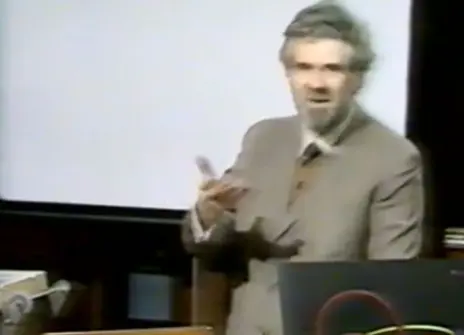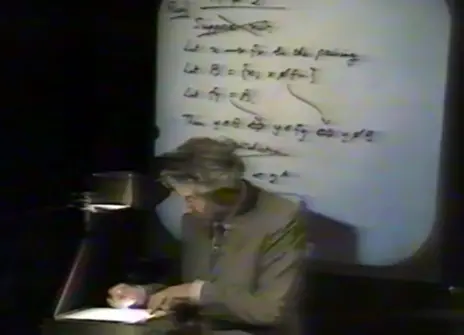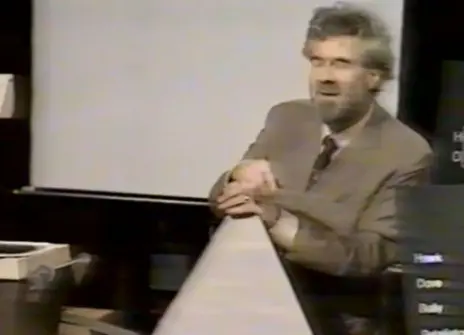Lecture 5 – Waves and music
In his fifth Christmas Lecture, Christopher Zeeman turns his attention to the mathematics of sound, music and harmony.
With the Brazilian berimbau as his instrument of choice (and aided by his three children), Zeeman demonstrates how music is produced – from the creation of sound waves to the workings of the human ear and the brain’s unique interpretation of nerve impulses.
We are then introduced to the “most astonishing mathematical result in music”: the harmonic theorem. Conjectured by Bernoulli in 1753, proved mainly by Fourier in 1807 and with the proof completed by Dirichlet in 1829, the theorem shows how any wave motion on a wire is the sum of simple harmonics.
Using harmonics – the "ear's natural slide-rule" – Zeeman demonstrates how various musical scales are constructed, including the popular pentatonic scale and Bach's famous well-tempered clavier which divides the octave into 12 equal semitones and forms the basis of most Western music.
He also shows us where the seventh harmonic is missing from today’s modern music and we hear how refreshing a melody can sound when it is put back.
About the 1978 CHRISTMAS LECTURES
Professor Christopher Zeeman presents the 1978 CHRISTMAS LECTURES on one of the oldest and most splendid endeavours of mankind.
As he explains in his original introduction to the series maths is at its core a paradoxical subject: "We are never quite sure whether it is an art or a science, whether we invent it or discover it, whether it is a man-made toy or a truth so universal that it is independent of the universe."
True to the tradition of the CHRISTMAS LECTURES, Zeeman places practical demonstrations at the heart of his presentations, using diagrams and pictures to reveal the nature and beauty of mathematical theorems and illustrating different types of mathematical modelling.
The first three lectures start with a pure point of view to ask 'What is the nature of mathematics?' before shifting to an applied point of view to explore the mathematics of nature.
These were the first CHRISTMAS LECTURES in its then 149-year history to be presented on the subject of mathematics and the series is still lauded as inspiring a new generation of mathematicians. Amongst the live audience was a budding young mathematician called Marcus du Sautoy who went on to present the Lectures in 2006 entitled ‘The num8er my5teries’.
Furthermore, the enthusiasm generated by the series led Professor Zeeman to establish the Ri’s Mathematics Masterclasses programme in 1981. They continue to enable thousands of young people across the UK to participate in the hands-on and inspired learning that is the hallmark of the CHRISTMAS LECTURES.






